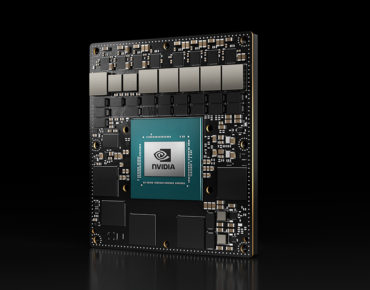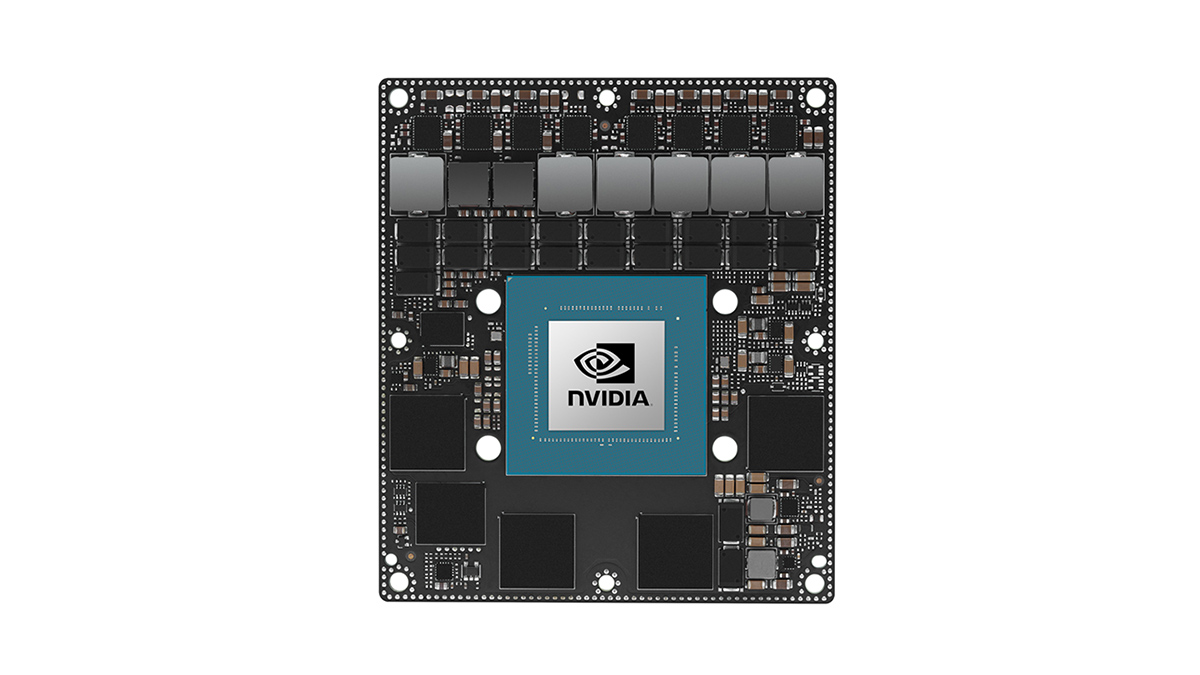Nvidia Brings Computer in Cars to the Desktop

Nvidia is bringing its Raspberry Pi-like board computers, named Orin, out of the trunks of cars and to labs. The Jetson AGX Orin 32GB developer board is the first of four new AGX Orin developer boards coming to desktops for the development of robotics as well as industrial and medical applications.
The computer – which resembles a motherboard – is a sibling of the Drive Orin computer that will be in autonomous cars from Volvo and Mercedes. The Jetson board has an Orin SoC with ARM CPU cores and Ampere GPUs, which also are in the Orin computers aboard cars.
Nvidia shipped its first Jetson developer board, called TK1, in 2014, and it had the company's ARM-based Tegra K1 smartphone chip. The TK1 board was modeled around the Raspberry Pi, which spawned the "do-it-yourself" subculture and many innovative home-grown hardware projects. Earlier Jetson boards have been used in home-grown robots and drones.
The company has since shifted its GPU development for AI applications, and Jetson is now a hardware platform on which companies can test, deploy and run AI and graphics applications.
Nvidia already dominates AI and machine learning in data centers through its GPUs, but the company is also trying to grab AI inferencing and edge applications through hardware like Jetson boards.
Jetson Orin provides a higher level of performance than a Raspberry Pi, and that makes it better for prototyping products that could ultimately be sold commercially, said Bob O’Donnell, founder of Technalysis Research.
"It's their robotic stuff in particular. There's a lot of people doing interesting things in robotics, like AGVs (automatic guided vehicles) in warehouses and industrial robots,” O’Donnell said.
Jetsons carry older GPU architecture because of the cost and power requirements, and devices like robots and drones don’t require the latest and greatest computing chips, O’Donnell said.
Nvidia said the new Jetson AGX Orins are up to eight times faster than their predecessor, called Xavier. Nvidia recently introduced the successor to Ampere, called Hopper, but the company hasn’t announced plans for the GPU architecture on Jetson boards.
The Jetson Orin boards deliver server-class performance in a compact form factor, which should improve developer productivity and expand the use cases, said Charles King, principal analyst for Pund-IT.
The Jetson AGX Orin 32GB delivers 200 TOPS of INT8 performance. It has 1,792 GPU cores operating at 930MHz frequency, an 8-core Arm Cortex-A78AE CPU, 32GB of LPDDR5 DRAM and 64GB of storage. Nvidia is selling the board for $999.
In November, the company will ship Jetson AGX Orin 64GB, which delivers the 275 TOPS of performance. It has 2,048 GPU cores running at 1.3GHz, a 12-core Arm Cortex-A78AE CPU, 64GB of LPDDR5 memory, and 64GB of storage. The computer is based on the hardware included in the $1,999 Jetson AGX Orin Developer Kit, which is already shipping and has a chassis.
The GPUs and horsepower for graphics and AI separate the Jetson boards from Raspberry Pi and other developer boards. The Jetson has HDMI and DisplayPort ports, and it supports camera input for computer vision applications.
The Jetson roadmap also includes the less powerful Orin NX boards, which are more like embedded parts than full-blown developer computers. The NX boards will ship later this year with 1,024-core Ampere GPUs and up to 16GB of storage.
Nvidia also has accompanying software and simulation tools for the boards that help in product development, and that is something other board makers can’t duplicate, Technalysis’s O’Donnell said.
For example, the Isaac SIM allows roboticists to combine computer-generated synthetic data with real-world data to better simulate robots in the virtual world.
The development computers run on Linux, and applications can be developed with a dedicated software development kit called JetPack. The software includes the Ubuntu desktop environment and libraries for AI, graphics and computer vision, an Nvidia spokesperson said. Nvidia recently introduced the TAO – which standards Train, Adapt and Optimize – AI toolkit, which makes it easier to write and deploy AI applications. The new developer boards will support TAO and other AI toolkits like Riva for conversational AI.
The Jetson roadmap includes a new version of the Nano board – which is popular with developers – for release in 2023.











